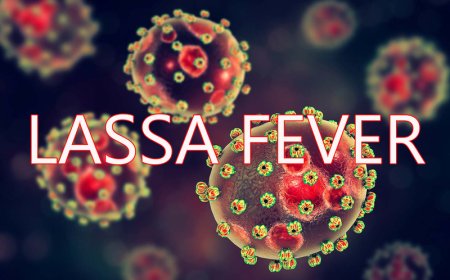Contribution of Garlic to the human system

Introduction
Garlic (Allium sativum) is a widely used culinary and medicinal plant known for its pungent flavor and numerous health benefits. It has been a staple in traditional medicine for centuries, used to treat various ailments and promote overall well-being. The bioactive compounds in garlic, particularly sulfur-containing compounds like allicin, contribute significantly to its health benefits. This paper explores the various ways garlic contributes to the human system, including its effects on cardiovascular health, immune function, digestion, and more.
---
1. Cardiovascular Health
One of garlic’s most well-known benefits is its positive impact on cardiovascular health. Studies suggest that garlic helps lower blood pressure, reduce cholesterol levels, and improve overall heart function.
a) Blood Pressure Regulation
Garlic contains compounds like allicin that help relax blood vessels, thereby reducing blood pressure. Research indicates that consuming garlic supplements can significantly lower systolic and diastolic blood pressure in individuals with hypertension. This makes garlic a natural alternative to blood pressure medications for some people.
b) Cholesterol Reduction
Garlic has been shown to reduce total cholesterol and low-density lipoprotein (LDL or "bad" cholesterol) levels while slightly increasing high-density lipoprotein (HDL or "good" cholesterol). This cholesterol-lowering effect helps reduce the risk of atherosclerosis and heart disease.
c) Improved Circulation and Anticoagulant Properties
Garlic contains compounds that prevent the formation of blood clots by reducing platelet aggregation. This anticoagulant effect lowers the risk of stroke and heart attacks. Additionally, garlic improves blood circulation, ensuring that oxygen and nutrients are efficiently transported throughout the body.
---
2. Immune System Boost
Garlic plays a crucial role in strengthening the immune system, making it effective in fighting infections and illnesses.
a) Antibacterial and Antiviral Properties
Garlic has been used as a natural antibiotic for centuries. It contains sulfur compounds that have been proven effective against bacteria, viruses, and fungi. Studies suggest that garlic can combat common infections like the flu, colds, and even more serious infections such as pneumonia and tuberculosis.
b) Anti-Inflammatory Effects
Chronic inflammation is a major contributor to various diseases, including arthritis and autoimmune conditions. Garlic has strong anti-inflammatory properties that help reduce inflammation in the body, thereby supporting immune function and reducing the risk of chronic illnesses.
c) Antioxidant Protection
Garlic is rich in antioxidants, such as selenium and vitamin C, which help neutralize free radicals that cause cell damage. By reducing oxidative stress, garlic helps slow down the aging process and lowers the risk of diseases like cancer and Alzheimer’s.
---
3. Digestive Health and Gut Microbiome
Garlic significantly contributes to digestive health by supporting gut bacteria balance and improving digestion.
a) Prebiotic Properties
Garlic contains fructooligosaccharides, which act as prebiotics—compounds that feed beneficial gut bacteria. A healthy gut microbiome is essential for digestion, immune function, and even mental health.
b) Antiparasitic and Antimicrobial Effects
Garlic has been traditionally used to treat parasitic infections and gastrointestinal disorders. It can help combat harmful bacteria, such as Helicobacter pylori, which is linked to stomach ulcers and digestive issues.
c) Liver Detoxification
Garlic supports liver function by stimulating detoxification enzymes. It enhances the liver’s ability to break down toxins and eliminate harmful substances from the body.
---
4. Cancer Prevention and Antitumor Properties
Research suggests that garlic has potential anticancer properties, particularly in reducing the risk of gastrointestinal and colorectal cancers.
a) Inhibition of Cancer Cell Growth
Garlic contains organosulfur compounds that have been shown to inhibit cancer cell growth and promote apoptosis (programmed cell death) in cancerous cells.
b) Detoxification and DNA Protection
The sulfur compounds in garlic help neutralize carcinogens and protect DNA from mutations, reducing the likelihood of cancer development.
c) Support in Chemotherapy
Studies indicate that garlic can enhance the effects of chemotherapy while reducing its side effects. It helps improve immune function and protects normal cells from damage caused by cancer treatments.
---
5. Metabolic Benefits and Diabetes Management
Garlic contributes to metabolic health by regulating blood sugar levels and improving insulin sensitivity.
a) Blood Sugar Control
Garlic helps reduce fasting blood sugar levels, making it beneficial for individuals with diabetes or those at risk of developing the condition.
b) Insulin Sensitivity
Compounds in garlic improve insulin function, helping the body use glucose more efficiently. This reduces insulin resistance, a key factor in type 2 diabetes.
c) Reduction in Diabetic Complications
By improving circulation, reducing oxidative stress, and lowering inflammation, garlic helps prevent complications associated with diabetes, such as nerve damage and kidney disease.
---
6. Cognitive Function and Brain Health
Garlic’s antioxidant and anti-inflammatory properties support brain function and may help prevent neurodegenerative diseases.
a) Reduction in Oxidative Stress
Garlic protects brain cells from damage caused by oxidative stress, which is a major contributor to conditions like Alzheimer's and Parkinson’s disease.
b) Improved Memory and Learning
Some studies suggest that garlic enhances cognitive function by improving blood flow to the brain and supporting nerve cell function.
c) Protection Against Neurotoxicity
Garlic may help detoxify harmful substances that contribute to brain aging and cognitive decline.
---
7. Skin and Hair Health
Garlic has been used in skincare and hair care due to its antimicrobial and nourishing properties.
a) Treatment of Skin Infections
Garlic’s antibacterial and antifungal properties make it effective in treating acne, eczema, and fungal infections like athlete’s foot.
b) Wound Healing
Garlic accelerates wound healing by reducing inflammation and promoting tissue repair.
c) Hair Growth and Scalp Health
Garlic’s high sulfur content supports keratin production, which is essential for hair growth. It also improves scalp circulation, promoting healthy hair follicles.
---
8. Bone Health and Arthritis Management
Garlic contributes to bone health by improving calcium absorption and reducing bone loss.
a) Prevention of Osteoporosis
Studies indicate that garlic may help prevent bone density loss, particularly in postmenopausal women.
b) Anti-Inflammatory Effects on Joints
Garlic reduces joint pain and inflammation, making it beneficial for individuals with arthritis.
---
Conclusion
Garlic is more than just a flavorful ingredient; it is a powerful natural remedy with numerous health benefits. From cardiovascular protection and immune system support to cancer prevention and improved brain function, garlic contributes significantly to overall well-being. Incorporating garlic into a daily diet—whether raw, cooked, or as a supplement—can provide long-term health benefits. Its antimicrobial, antioxidant, and anti-inflammatory properties make it a valuable addition to natural medicine and preventive healthcare.
In summary, garlic is a powerhouse of nutrients that supports multiple body systems, reinforcing the idea that natural foods play a crucial role in maintaining health and preventing disease.




































